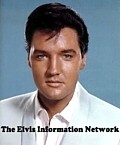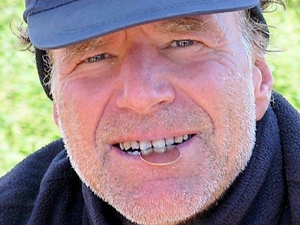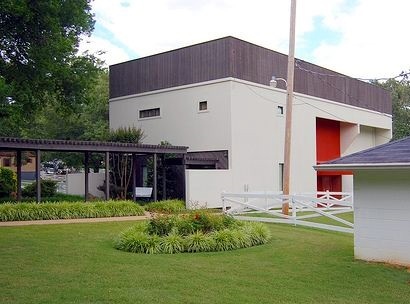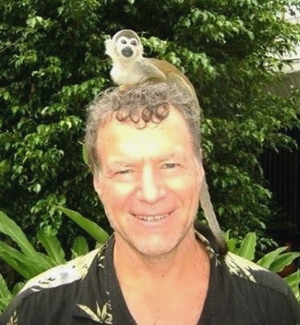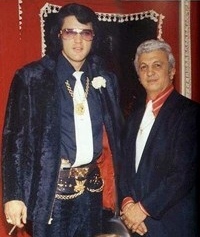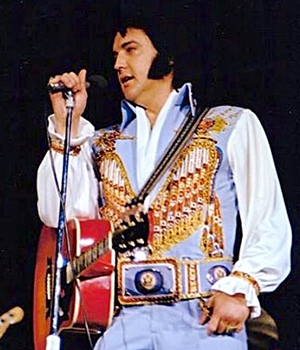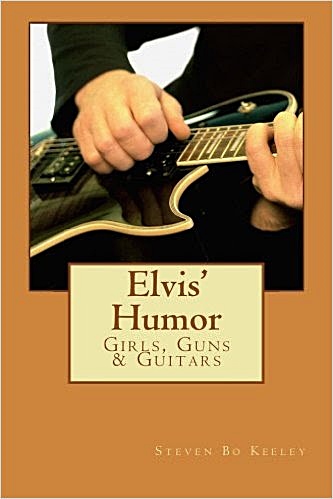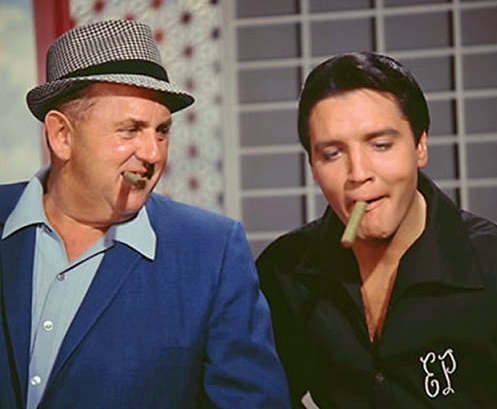 |
 |

Steven “Bo” Keeley has achieved the odd thing or two in his life (gross understatement intended). He is a veterinarian, naturalist, holistic healer, author (of more than 20 books) and professional athlete who has travelled to 105 countries on a shoestring (to name but a few of his accomplishments). His latest book is Elvis Humor Girls, Guns & Guitars. Bo is also an adventurer whose Wikipedia page reads like an account of Indiana Jones.
A decade ago I dug a burrow in the Sonora, USA desert and pop out now and then to travel and write books. I’ve walked the lengths of Colorado, Florida, Vermont, California, Baja, and Death Valley seeking the Call. EIN: Were you an adventurer from an early age? BK: I was an adventurer from the get-go. I jumped down the clothes shoot into the family cellar for a phoenix birth into adventure. From there I climbed the steps into the neighboring woods, swinging from the Weeping Willow vines like Tarzan (whom I had read about), and pedaled on full day bicycle trips, and raft trips on creeks like Thor Heyerdahl aboard Kon-Tiki. These were a series of escapades to explore nature and the border pieces of the puzzles that is me. EIN: What did you find? BK: I found myself at age thirty in a garage called Nirvana on a remote lake in Michigan where I undertook a final series of 24-hour experiments designed to fill in the interior pieces of the puzzle. Slowly I began to take shape by bicycling 24 hours, walking 24 hours, not blinking 24 hours, sleep deprivation, and so on in an article I wrote called ‘Bladder Cross-Training in a Michigan Garage’. The point, for example, of trying to jump up to hit my head on the ceiling was to explore my extremes. EIN: And…? BK: Here I am to answer your questions about Elvis from an adventurer’s point of view.
I was not an early Elvis fan … until three decades passed. In 1975 racquetball boomed across America and Elvis built his own court at Graceland complete with gold swivel 360-degree showerheads. I knew the architect and builder of the court. Everyone in Presley’s entourage, including the bodyguards, band, and many of his girlfriends, played racquetball. I was the #1 or 2 player in the world at the time and, though I didn’t play at Graceland, many of my peers did including champions Davey Bledsoe, Mike Zeitman, the Smith brothers, Dr. Nichopoulous, Fred Lewerenz , and others in a special group of a couple dozen for whom I coined the name Elvis and the Memphis Racquetball Mafia. A 2013 article by that name was syndicated and became the basis for the 2015 ESPN documentary ‘When the King Held Court’. EIN: What did the King look like when he held court? BK: Elvis struck the ball around the court like he was strumming a guitar for the fun of it. He looked like he was on stage except with a racquet. His moves incorporated karate, just like in concerts, and to work the audiences he would whack guys in the back of the head with the ball to keep them on their toes. When someone like Sonny or Red West whacked him back to the kidney with the ball, a free-for all would ensue. Elvis loved mixing it up, and though I would like to say that his favorite sport was racquetball, instead it was these in order: Football, martial arts, girls, and racquetball. EIN: Elvis lived hard, and so have you. What are some of the highlights for you over the years? BK: They would include a handful of mental and physical feats. The first real tough thing I did was Veterinary School. Due to a post WWII pet boom Michigan State University devised a concentration program to cram six years into five, including summers and weekends. My next point of pride was winning a National Paddleball Championship while in Vet school. This parlayed on the West coast after vet school into multiple National titles in racquetball and paddleball. One of the most difficult things I did was learn to become ambidextrous, playing tournaments left and right handed. The goal was to go up one side of the bracket lefty, and the other side righty, and meet myself in the finals. Always a prosaic perfectionist, I learned to write opposite handed and to read and write backwards with the print flowing from right to left. I’ve read the last few hundred books upside down to balance the visual system and have greater stamina. Let’s say you’re traveling down the Red Sea with nothing to do but read – being able to turn the book every which way is like shifting arms in weight lifting to go longer. Let’s say you’re writing a book or a long interview and want to continue to make it enjoyable – you just turn the screen upside down and continue reading or writing to stay fresh. I like what I’ve done in travel. I became a boxcar tourist riding the rails of North America and Mexico and ultimately developed a website and Executive Hobo Service as a sort of hobo Outward Bound. In world travel, so many near death experiences accumulated that I sat down and listed them all on index cards, stacked them into chronological order, gave the concept a working title of ‘Catman Keeley’ (The man with nine lives), created a website http://www.catmankeeley.com/ , and wrote a two-volume autobiography titled the Book of Bo I & II. I get press now and then and the most recent was a feature in Mother Jones with an improbable title of ‘The Amazing and Possible True Adventures of Catman Keeley and his Corporate Hobos’. EIN: Is there one accomplishment you value over all others? BK: I’ve helped myself enough that my greatest thrills have become helping others. My first venture of altruism was pulling the oldest fraternity called Farmhouse out of the athletic cellar at Michigan State University. Ever since the college founded in 1865 Farmhouse had been at the bottom of the fraternity rank in athletics while #1 scholastically. I was able to coach the genius hayseeds to become #1 while attending vet school. Now I establish silent scholarships as a sub-teacher in California desert communities, help stray animals, and give a handout where a handout’s due or earned. EIN: What is involved in a typical Bo Keeley day in July 2016? BK: I use a systematic approach for efficiency. Five days a week 12 hours a day for the past six months I’ve been at a library working on a new biography. After writing and publishing about 26 books, this may be the last and the best. It’s about a telekinetic schizophrenic who got on ‘That’s Incredible’, was Star Magazine’s ‘World’s Greatest Psychic’ cover story, a hillbilly martial artist who broke the Guinness record for the most linear feet of bricks broken in a single blow, and became the greatest escape artist in modern history from prisons and insane asylums. It’s been a battle of wills finishing the biography, but it will get done.
EIN: Bo, apart from numerous physical endeavors, you have played chess with U.S. Open champion, Art Bisguier. In fact your bio suggests a strong balance between mind and physical pursuits. What is your philosophy on how you approach your life? BK: Look. If I’m here I might as well do something. I’ve been bored and don’t like it. I’d rather accomplish. Create value: make something out of little. I’ve always followed a Golden Line of progression in some little way every day of my life, thinking that will affect the soul. I learned early on that there are two paths to excellence. You can do it the Jack Dempsey way and work the mines and forest, and tie your hands to the brake rods underneath boxcars to keep from falling under the steel wheels while hoboing to the next of hundreds of bar fights en route to becoming the World Heavyweight Champion. That is a rags to riches story, it is the American possibility and way, and I like it and have tried to emulate it. On the other hand, there is what Napoleon Hill called the Master Mind Group in his book Think and Grow Rich. A Master Mind Group are highly qualified teachers in your area of mental or physical pursuit. In the 1980s, I identified those I wanted to learn from and ‘drove to the mountain’. I outfitted a ’74 Chevy van and cruised the USA with a 7’ stuffed rabbit named Fillmore Hare riding shotgun. Not only did I visit intellectuals coast-to-coast, Fillmore would wave down smart looking hitchhikers for me to talk to via an invisible fishline attached to his thumb. In this way, I visited and vied against chess champion Art Bisguier, checker champ Tom Wiswell, ping pong’s Marty Reisman, speculators Vic Niederhoffer and George Soros, and scientists like DNA’s Jim Watson. What an honor!
As I age, and the sleight of hand becomes less nimble, I have gravitated toward animals for simple companionship. I’ve been car camping in a Hertz rental in the Sonora desert for the past 16 months ever since thieves broke into my desert property and took everything of value. So I followed the Call of the Wild deeper into the desert and have made friends with various species including Kit Foxes who tug me by the hand to the dinner plate to share Ol Roy’s sirloin strips. EIN: Bo, please tell us about the time you and a friend, disguised as Mexicans, rode atop freight trains with Central American immigrants through Mexico, finally being apprehended by the US Border Patrol while swimming the Rio Grande with expired Mexican visas. BK: One of the grandest migrations in modern history is thousands of Central Americans atop freights through Mexico to the Promised Land USA. I’ve ridden with them a dozen times, two hundred of us on the decks of a dozen freight cars playing cards, trading stories, and ducking branches. Why would I do that? All you have to do is read John Griffin’s Black Like Me to know that to empathize with a group one must become one of them. I became a Mexico hobo, and still enjoy riding the rails south of the border without the worry of railroad bulls. The last one who picked me up was a Bull-ette who took me home and introduced me to her mother who entreated me to marry her daughter. Alas, I left her after that short ride, and took to the rails north to the Promised Land. I got nabbed by the Border Patrol wading across the Texas Rio Grande into USA. The Border Patrol was cordial after finding out I was writing Executive Hobo: Riding the American Dream. EIN: And the time you were deputized in Namibia. What happened? BK: That was a little affair in the southern Africa country of Namibia where I rolled into Windhoek fishing rides with a thumb. The equivalent of a sheriff stopped and asked if I’d masquerade as a tourist wishing to buy elephant Ivory from a desperado they had been trying to corral. I scorn Ivory poachers, so I found myself driving an unmarked car with a pistol under the driver’s seat driving up to the perpetrator’s doorstep. He was such a nice young fellow who claimed ignorance of the Ivory trade that I didn’t know who to believe. I parked the car in an alley, and hitched out of town. Anything can happen in world travel, which is why I recommend it. EIN: Bo, what is that drives you to lead such a varied and challenging life? BK: I was the Elvis Presley of potato country growing up in Idaho as a kid. Elvis’s mom dragged him between her legs in a gunny sack up and down the rows of picking cotton, and my mom took me during what was called Potato Vacation from grade school in the potato capital to pick spuds. Like Elvis, I didn’t have a damned thing that couldn’t be left out in the rain. Is it any wonder he became wild, or anyone who had an upbringing like that would strive out and away from it? At least that’s what I think, in retrospect, as a certified Psych Technician.
EIN: Bo, you and Elvis shared a love of racquetball with Elvis building a court at Graceland and you achieving status as US National Champion and one of the world’s top three players throughout the 1970s. How proficient was Elvis as a racquetball player? BK: Elvis was what I would call a Club Player, like Bobby Fischer was a genius in one thing but a Club Player in racquetball. E had a strong forehand as an extension of karate, a standard club backhand from never throwing a football backhanded, and hit the gamut of serves while preferring the hard drive. Racquetball was a workout and a release for him. He played in white tennis shoes, shorts, and Dr. Nick made him put on safety goggles to protect those eyes for the girls. His headband was white and he always wore a glove, and almost always a rubber suit around the midriff to lose weight. At the time, he was battling a watermelon gut and used racquetball to sweat off pounds to look good for his fans before going on tour. Make no mistake, Elvis Presley was a great athlete. He played football, rode horses, waterskied, and Kenpo karate. The Memphis Racquetball Mafia told me that he was ‘deadly’ at martial arts, and I believe that after hooking up with grandmaster Ed Parker that Elvis could manage himself in any scrap. I saw him perform in a video with hands flashing as fast as Bruce Lee’s, and more rhythm, but Bruce didn’t play the guitar. As for racquetball, Presley’s silent physician and my personal friend, Dr. Fred Lewerenz of Michigan stated it best. He told me that Elvis just loved to play. He liked the fast action and release of energy, along with shedding pounds. It made him feel good. Having the court in back of Graceland meant that Elvis could yell at the guys from the piano, ‘Hey, everybody. Get dressed for racquetball!’ And minutes later the bodyguards, musicians, girlfriends, and some of the pros on hand, would be on the court having a good time. EIN: Elvis surrounded himself with several premier level racquetball stars. Please tell us about that. BK: The first I heard of Presley in racquetball was from my competitor and chum, National Champion Davey Bledsoe in the mid-1970s. Bledsoe was supplying Leach Industries (also my sponsor) racquets and sweats to Elvis with one distinct difference: The equipment had Elvis’s name engraved in gold on them. It’s easier to refer you to the complete vicissitudes of Elvis and racquetball in ‘Elvis and the Memphis Racquetball Mafia’ that goes from his first racquet to his attempt to open Presley Center Courts that was squelched by Colonel Parker. The members of the Racquetball Mafia from the pro racquetball tour were Bledsoe, Lewerenz, Dr. Nick and his son Dean, Mike Zeitman, Sarah Green, Stew and Steve Smith, Randy Stafford, and Dave Fleetwood.
The best player at Graceland after all the pros went home was bodyguard Red West who fell just short of Open play. Red was an accomplished all-around athlete who took those talents to the racquetball court. Still, my tournament nemesis Davey Bledsoe once challenged one-at-a-time all of E’s security to one game to 21 for $100 per man. Bledsoe used an antifreeze bottle as a racquet against Red, Sonny, Dave Hebler, and the rest … and won each bet. EIN: Why did racquetball take hold in the US while squash was prominent in other countries including Australia and India? BK: Racquetball took America by storm in the 1970s because the nation psyche was suited to it, as opposed to Australia with its rugby and India with its squash. I know squash from having played a little and buddied with world champions Heather McKay and Vic Niederhoffer, and I knew rugby in preferring those rougher sports such as it, football and wrestling to the one that I happen to be better at, racquetball. But in USA in the 1970s the Americans’ brains were pacing fast and furious. They demanded a bouncier ball and bigger and bigger racquets, until the game nova’d at the end of the decade and literally fell in on itself like a black hole. Elvis, racquetball, and I were simply a synchronicity. My little part in it occurred on top the William B. Tanner Building in Memphis. A little backstory first. Memphis and San Diego were the warring racquetball capitals during the Golden Decade of the 70s. Even before Elvis built the Graceland court in 1975, there was another man about Memphis who was as moneyed as Presley and nearly as powerful. He was called ‘the most prestigious man in Tennessee’ by the press that he controlled. Bill Tanner and I crossed paths, shook hands, and locked horns a few times. Tanner owned the building named after him rising on Union Avenue above downtown Memphis where many of the racquetball pros whom I’ve mentioned worked for him. Elvis and the Racquetball Mafia played in a private court on the top floor before the Graceland one was built because Tanner would keep it open all night for them. On one swing through Memphis with Fillmore Hare in the Chevy Van, I stopped by the Tanner building, climbed the stairs, and was jogging laps around the rooftop 18-lap-to-a-mile track when President Tanner stepped out the sliding glass doors and blocked my progress. He gestured grandly over the rail over Memphis that he ‘owned’. ‘The key to the City is yours, Keeley, ‘he said, ‘if you join the Tanner team.’ He wanted me to go to work for him, which included meeting Elvis. I explained that I had a previous sponsor whose contact I couldn’t break, and thanked him for the offer. That was that.
Back on the Graceland racquetball court, Elvis looked pale, weak and overweight, but there was nothing to suggest impending death. About that time Bledsoe beat the three bodyguards with an anti-freeze bottle –Red and Sonny West, and Dave Hebler- who released Elvis: What Happened in a UK serial that was later published as a book in August, 1977. On August 16, 1977, a few hours after leaving the racquetball court, Elvis succumbed. I wrote that Elvis had played racquetball to death.
IN: Bo, Elvis’ Humor Girls, Guns & Guitars. What gave you the idea for what is a unique book in the Elvis literary canon? BK: Now we’re talking Elvis! After the ‘Elvis and the Memphis Racquetball Mafia’ story I thought I had caught a tide. I would convert the article into a book Elvis and Sport. I don’t go half-way on things and quickly identified and ordered from Amazon.com the top forty-five biographies by those who knew him: His bodyguards, step-brothers, musicians, girlfriends, housekeeper, doctors, neighbors, and kin - only firsthand information. I also had taped interviews from a dozen of the Memphis Racquetball Mafia. In each book and transcript I highlighted all the aspects of E in Sport. EIN: How long did it take you to research it? BK: A year later, in mid-2014, I had sufficient material for a lean book on Elvis in Sport. As I had read the biographies, early on I had noticed another strong theme in the Presley’s life – humor. It never stopped. It was as prominent as girls, guns, and guitars in his life. I had also highlighted his humorous moments in the forty-five books. I liked the humor better than the sport. I methodically cut each of thousands of comic instants from the research, including EIN, and ordered them chronologically. Then clipped the same anecdotes told by different people – they matched, and there was little irregularity, making Elvis Presley truly a connoisseur’s funny fellow. With this bunch jiggling like three pounds of carrots, I fashioned Elvis’ Humor. EIN: Apart from sourcing examples of Elvis’ humor from published sources you also interviewed people who knew Elvis. Who were some of the most interesting people you talked with? BK: The ‘live’ people provided the best visions into the comic life of Elvis, and when they started crying on the phone, whether from joy or sorrow at the loss of their joy, then it was interesting. Especially helpful were Stew and Steve Smith, Dr. Nick and son Dean, Randy Stafford and Dave Fleetwood, Dr. Lewerenz, and I’m sorry if I’ve forgotten others. To pick one would be to slight the others, which would not fare well for me next time on the racquetball court. EIN: Bo, what are some of your favorite Elvis comic moments? BK: I like all of the moments about Elvis and his pets – the chimp, dogs, horses, and menagerie in his swimming pool. The girls’ ones get redundant like eating steak every meal. The appearances of Colonel Parker are stunning – and now we know who tickled E’s funny bone. The money and gifting yarns show what Presley was really made of. The media ones portray a graceful leader among leaders. Hollywood is crazy and that’s why E had to be funny. There are just too many anecdotes sitting on the smorgasbord to assimilate and dispense a favorite one or two. That’s why the collection should be a one-a-day reminder like a calendar of proverbs rather than a one-sit read that kills you laughing.
EIN: How important are the comic moments recorded in your book in providing insights to who Elvis was? BK: The hardest part of the book to write was Chapter One in explaining that I thought that nearly everyone else was wrong about Elvis, and that I was right. The deepest insight into a person come from his comic moments. This is not the ballyhoo which the Elvis Fan clubs promote, but the inner Elvis as revealed to the reader through his treasury of humor. EIN: Did your research for Elvis’ Humor change your views on Elvis in any way? BK: I became ardent about Elvis Presley for the first time, but not in the way other fans do. I see him as a benevolent, daring, and funny guy with the longest streak of individualism back to Horatio Alger. He is the model of the American Dream for which the USA stands.
EIN: Your nickname “Bo”. What is the genesis of this? BK: In Fall of 1985 I taught a sociology course at Lansing, Michigan College called ‘Hobo Life in American’. I had just come off the rails with spaghetti sauce frozen to my beard on the RR High Line through Montana, North Dakota and on into Michigan. With little wherewithal, I took a cellar room and placed a pine coffin lined with electric blankets against the blowing winter next to my memoirs. The first night, after carefully calculating the amount of oxygen contained in the space and the amount consumed by a sleeping human, I set an alarm as back up for the next morning that I wouldn’t smother. Alive and warm, the next morning I walked in my bib overalls to the college, into the Sociology Dean’s office, and pitched an idea about teaching a course on the history and how-to of hobos. The course was a success during which the class gave me the moniker ‘Doc Bo’ that’s stuck around like a good penny. EIN: Apart from your upcoming book with James Hydrick, what is next for Bo Keeley? BK: The Amazon rainforest beckons. There is an overgrown path through the Amazon Basin that is no longer negotiable by vehicles due to washed out bridges. I’ve got the maps, and now, as Lao Tzu said, ‘The journey of a thousand miles begins with one step.’ EIN: Bo, is there anything else you would like to say to EIN readers? BK: Thank you. When the right words come out I know that you’ve asked the right questions. EIN: Bo, thank you again for talking to us today and sharing of your fascinating life. It really is appreciated and we wish you continued sucess in the future......including hopefully publishing Elvis in Sport sooner rather later.
.......Visit the various Bo Keeley websites....... http://www.dailyspeculations.com/wordpress/?cat=205 https://en.wikipedia.org/wiki/Steven_%27Bo%27_Keeley http://www.motherjones.com/media/2015/01/bo-keeley-corporate-hobo-adventures
|
|
